
When a colleague suggests you get to know Camille Seaman, a fascinating photographer whose pictures will inspire and challenge you to take better care of our world, you take notice! Laurie Pasteryak, the producer of a TWE event I took part in at the Fairfield Museum and History Center in CT, introduced me to Camille and her amazing award-winning photos. They showcase the interconnection we have with the earth in all its beauty along with the extremes of its changing environment.
“I hope that my photographs trigger an emotional response. That’s all I can hope for. I just hope people start to think of how beautiful and amazing our planet is.” Camille Seaman
Along with her well-known work on diminishing icebergs, Camille has photographed polar bears, storms, Native Americans and more. Thanks to Laurie, I was able to connect with Camille to gain insight on what she sees is happening to our planet and how we should step up and pay attention…
EYE: You describe yourself as explorer, mother and citizen of planet Earth. Are all these intertwined?
CAMILLE SEAMAN: I think my awareness of being a citizen of Earth also is related to being a mother. And if you’re going to explore and understand more about your planet, it helps to have an intention as to why you’re exploring.
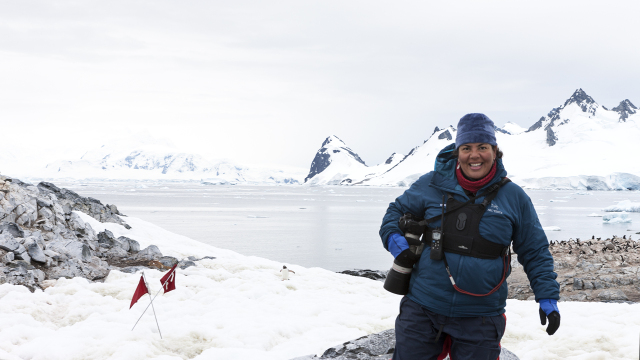
EYE: You gave an impassioned and popular TEDxSMU talk “Connection and Purpose.” It was a call to action for people to wake up and be aware that we have to protect our planet. What was your goal with this conversation?
CAMILLE: It was to highlight the imperative and urgent nature of what is happening on our watch here on Earth. After the talk many people came up to me sobbing and needing hugs.
EYE: Your photos move people. They are mesmerizing. What intrigued you to get involved with photography in the first place?
CAMILLE: I always made photos, even from the time I was a young child. It wasn’t until I was 32-years-old that I decided to become a professional photographer. I know that I have a great understanding of quality of light and that something has to be beautiful in order for someone to look at it, even if it’s of a horrible situation.

EYE: I read you were an expedition photographer aboard small ships in the Arctic and Antarctic. What is it about the polar regions and icebergs that inspire and attract you to photograph them?
CAMILLE: They weren’t anything I had seen before. The scale is awesome! The shapes are awesome. They were interesting to me. I love the polar regions of our planet because they are not like anywhere else on our planet. They are quite special.
And, I also like the quality of light there. The light in the polar regions is unlike any place on earth. Sometimes it feels otherworldly and in some instances it feels impossible. It is more difficult to describe than it is to experience.

EYE: There are some serious warnings about icebergs melting due to global warming. In fact, the January, 2021, The World Economic Forum published a report that found:
Ice melt over the past three decades has steadily increased, according to a new study.
It found the rate of ice loss has increased by 65% between 1994 and 2017, with Antarctica and Greenland worst affected.
Though sea ice loss doesn’t contribute directly to sea level rise, it does have a strong and indirect influence.
Rising sea levels could result in cities like Miami, New York City, and New Orleans ending up underwater by the end of the century.
How are we connected to icebergs melting? And on an individual level, can we do anything about the ice loss?

CAMILLE: The way that we are living on this planet as humans is not working. Icebergs melt all the time. That’s not the issue. The issue is the rate and amount of ice that’s melting that’s unprecedented. The planet will go on without us. That’s not an issue.
The question is, do we, as humans, want to have the comfortable environment that we have, or, do we want to make our life much more challenging by decimating the planet that we have on an individual level?
Can we make a difference? Every action has an impact. I understand people saying, “ Well, I’m just one person, what can I do?” but we all have to do what we can do.
EYE: What did you first expect when you initially started your work on icebergs? And what have you come away with?
CAMILLE: When I first started working on icebergs, I didn’t expect anything. I was there in the moment, curious and doing the best that I could to document what I saw and what I felt.
Almost 20 years later, having photographed all this time in the polar regions, I understand that we humans are really clueless when it comes to the fact that we only have one planet and that it’s a very special thing. We really don’t appreciate what we have here.
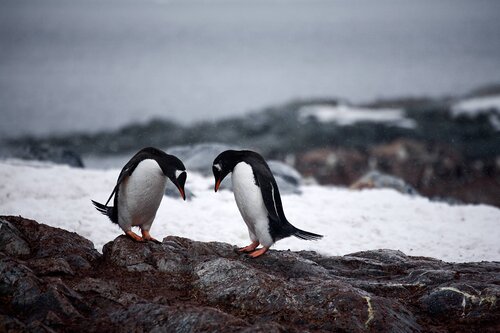
Antarctica Peninsula/Dec. 2007
EYE: What do you hope people, viewers, come away with after looking at your images of icebergs?
CAMILLE: I hope that it triggers an emotional response. That’s all I can hope for. I just hope they start to think of how beautiful and amazing our planet is.

EYE: You have also chronicled the surreal, the scary and the beauty in tornadoes, super storms and numerous other climate related phenomena, plus polar bears and wolves….all that in addition to the polar regions. Does any moment stand out in all that for you that was particularly dangerous or scary? How did you become so fearless?
CAMILLE: I don’t see any of what I do as scary. If viewers see my images as scary that says more about them than it does about me. I think that I have great respect. I do feel awe in the presence of such beauty, but I never say I felt scared.
I have a respect for our environment, for the other creatures that we share this planet with. When you truly respect them, you don’t need to fear them.
EYE: Do you consider yourself a climate-environmentalist-activist using your art to make people more aware?
CAMILLE: I wouldn’t say that. I think the act of pressing the shutter is an activist thing, but so is living. Life is an activist thing. If you are a spectator in life, you’re not doing it right.
EYE: What is the most important thing you’ve learned about our Earth’s environment?
CAMILLE: That it’s awesome and we need to respect it or it will bump us off of it. The good news is that we have less than ten years to right this ship before it sinks.
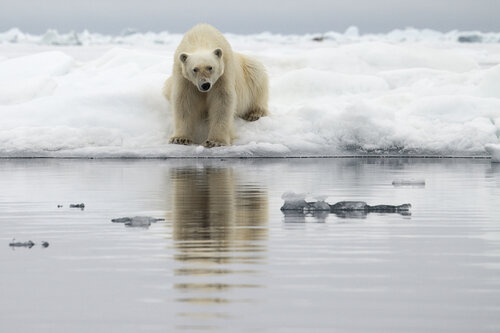
EYE: So, do you have any advice for us to take action?
CAMILLE: I think that how each of us deals with the climate situation, the climate crisis, is a personal and very moral undertaking. I have no right to tell anyone else what they can or should do. The only thing I ask people to do is to spend time thinking about what they care about on this planet and at least stand up for that one thing.
When you start to live in that way, everything else starts to pull you onto the path and that’s the best start.
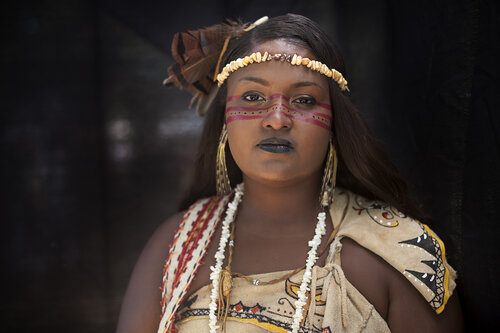
EYE: You’ve also produced three powerful photo series on Native Americans: We are Still Standing, Standing Rock: No Dapl and Standing Rock: Portraits. Knowing your father is Native American, that must have been quite a wonderful opportunity for you. What do you want people to take away from your images?
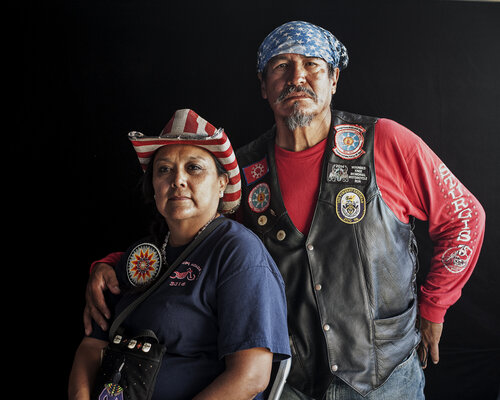
CAMILLE: I just want people to know that we are still here and we don’t necessarily look like Hollywood renditions of Plains Indians all the time. We are all around and we are a living, evolving culture. We are not hermetically sealed.
From that, I hope people are seeing themselves sometimes in some of the people that I photographed, but it was just really important for us to document ourselves instead of somebody else doing it for us.
EYE: Were there any surprises for you personally and professionally as you took these photos?
CAMILLE: I think the only surprise that I really realized was that it’s a huge, monumental, lifelong task to try and photograph all of the tribes or at least people from the individual tribes, because there’s almost 600 federally recognized. That’s not even talking about the ones that aren’t federally recognized. So I realize that I’m too old to do justice to that project.
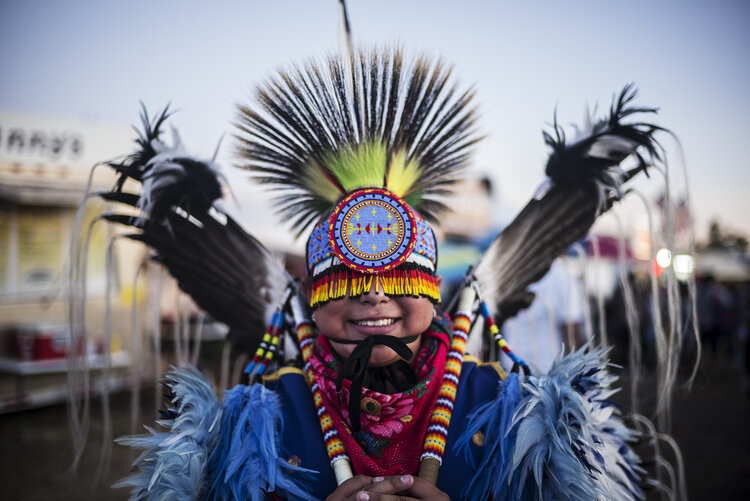
EYE: Do you have advice for beginners in the field of photography?
CAMILLE: My advice for beginners is to figure out why you want to be a photographer, specifically, what can you say and bring to photography that hasn’t already been said. Also, remember that it’s a marathon, not a sprint.

EYE: What projects do you still want to tackle?
CAMILLE: I think photography is so embedded in who I am that I don’t I don’t necessarily feel that I have to think of things as “projects.” It’s just my life. I would like to tell more stories and probably with moving pictures of film and maybe write another book.
I think until every human understands their interconnection and interrelatedness to all of life on this planet we do not stand a chance as a species. My stories I hope will further that idea.
EYE: Thank you, Camille, for sharing your thoughts and your remarkable photos with us, and most importantly for reminding us just how stunning but fragile our planet is. In addition to lectures and workshops Camille also authored three books, The Big Cloud, Melting Away and The Last Iceberg, which I recommend highly to all our readers.
Continued success to you, Camille, as we all look forward to your next endeavor and insights! We wanted to share this installation at the new Facebook buildings in Burlingame, CA. A few of Camille’s polar images are spread over three walls which are 15 feet high and 120 feet long. They were made during a single evening in the Lemaire Channel, Antarctica. Thanks to Kristin Farr @facebookopenarts for these photos

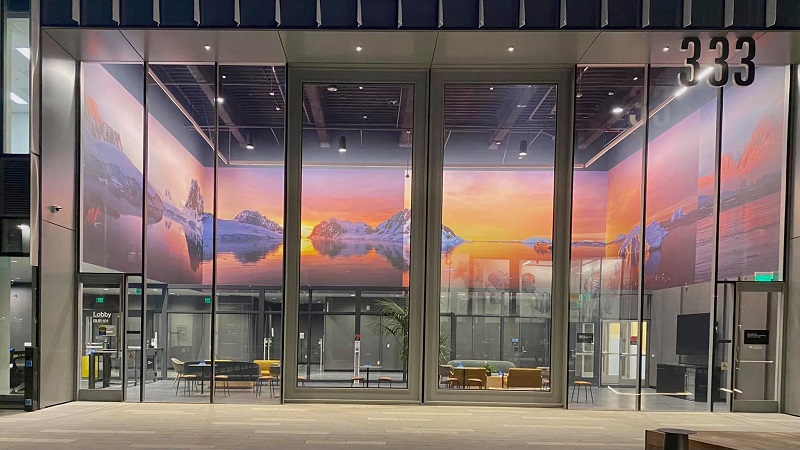
For more about Camille Seaman check out:
- Website: CamilleSeaman.com
- Twitter: @camilleseaman
- Facebook: @camilleseamanartist
- Instagram: @camilleseaman
Some links in this post may be “affiliate links,” meaning TWE receives a small commission (at no extra cost to you) if you use that link to make a purchase.
To meet another inspiring photographer, make sure you take a look at our story with Mimo Khair, whose global photography will captivate you.

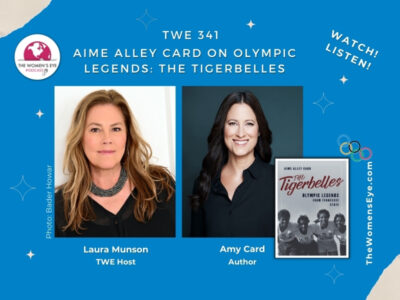

Leave a Reply